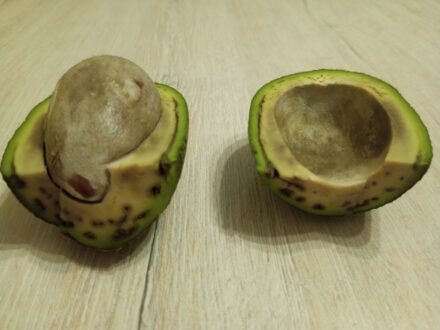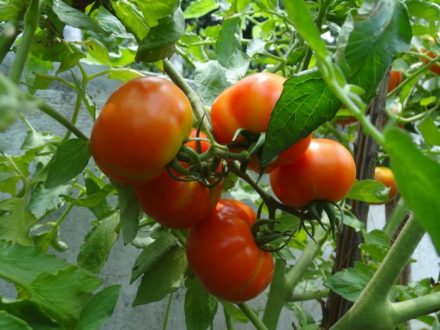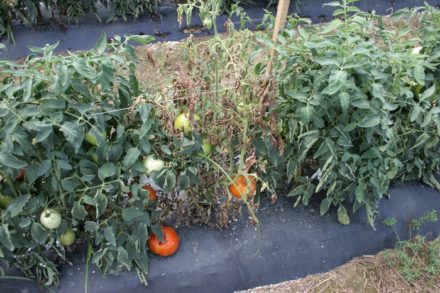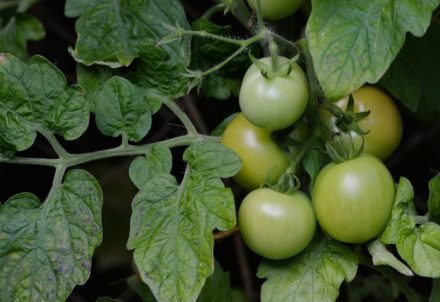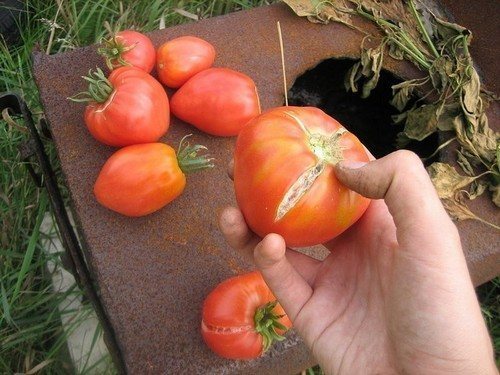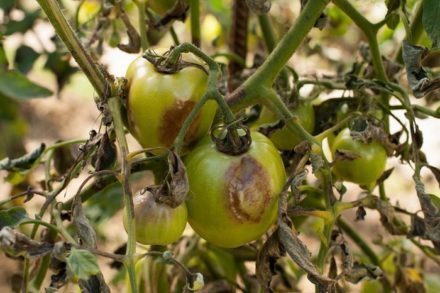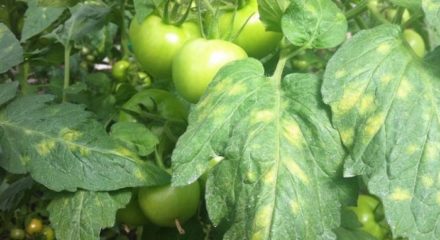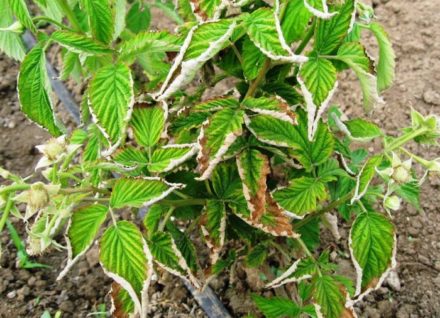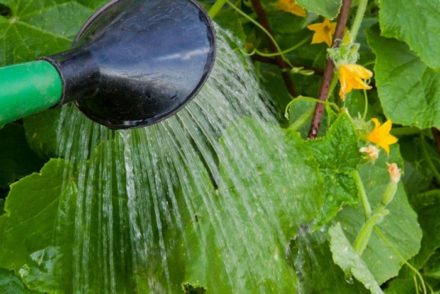Tomatoes collected from your garden are tasty and healthy, but only if their pulp has a uniform structure, without white streaks. Why do hard sprouts appear in tomatoes? There are several reasons for this. It is better to eliminate unfavorable factors in advance, then it will be possible to harvest a harvest of excellent quality for salads and canning.
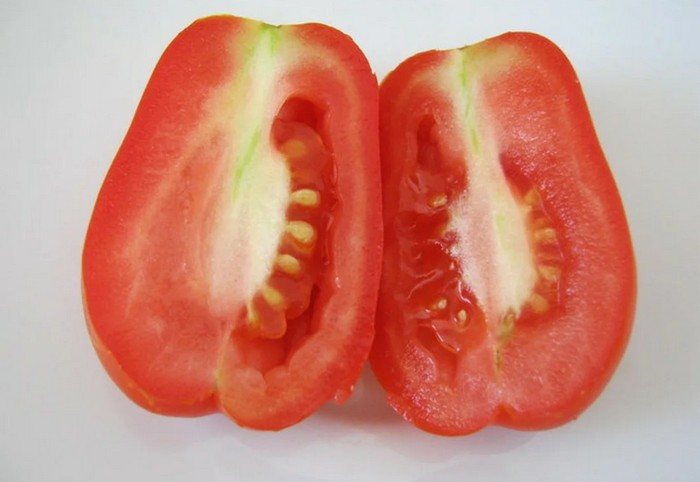
Exposure to heat
In open ground, tomatoes rarely suffer from heat, but in a greenhouse this is a common occurrence. Tomatoes grow best at temperatures between 20-26°C. In this case, it is advisable to avoid temperature changes. Why is it so important to maintain a suitable temperature regime? Due to overheating, tomato roots stop absorbing potassium, which is responsible for the formation and development of fruits.
If the temperature is too high, the vegetable stops producing lycopene (it is this carotenoid that is responsible for the color and taste of tomatoes). During hot weather, it is urgent to reduce the temperature in the greenhouse by any means. This could include watering the paths with cold water, painting the walls with chalk solution, using a sunscreen, and frequent ventilation.

Unbalanced feeding
During the initial stages of growth, tomatoes need more nitrogen. Starting from the flowering period, plants need fertilizing with potassium, phosphorus, and calcium.If you apply fertilizer with a predominance of nitrogen at this stage, fruits with white streaks will form and the amount of vitamins and carbohydrates in vegetables will decrease.
An excess of nitrogenous substances in the soil will manifest itself in the accelerated growth of tomatoes and the formation of large leaves with a rich dark color. With potassium starvation, blossom end rot appears and marginal burns occur on the leaves. In this case, the tomatoes urgently need to be fed with potassium sulfate (1 tablespoon per 10 liters of water). 0.5 liters of nutrient solution is poured under each plant.
To avoid an imbalance of minerals during flowering and fruiting, it is better to use a complex fertilizer or fertilize with wood ash (1 cup per 10 liters of water). Chloride compounds should not be added; they have a bad effect on vegetables. Loosening and abundant watering will help get rid of excess nitrogen in the soil.
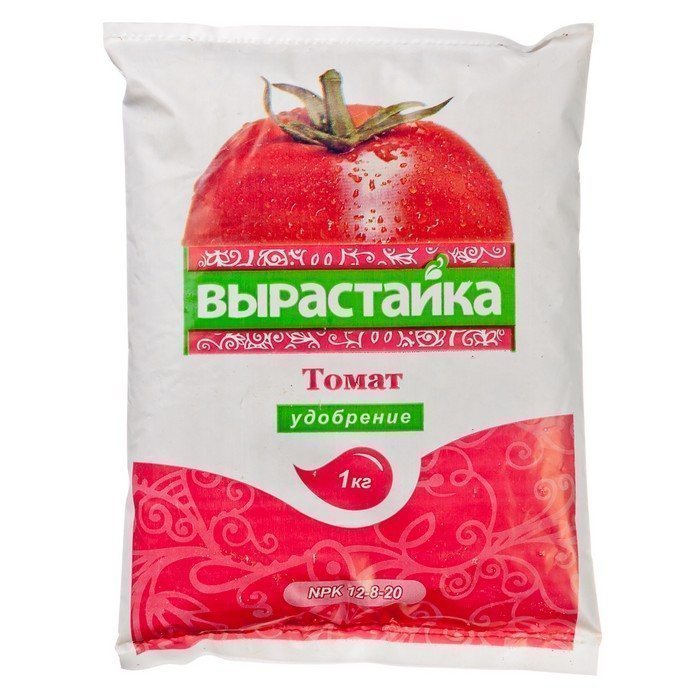
Damage to phytoplasmosis
Viral diseases are another reason for the appearance of white streaks in tomatoes. Most often, tomatoes are affected by phytoplasmosis (stolbur). The causative agents of the disease use weeds as a natural reservoir. They are transferred to cultivated plants by pests (aphids, armyworms).
On the affected bush, the leaves become purple in color, become smaller, and become deformed. The fruits of such a plant are also small and tasteless; you won’t want to eat them. The diseased bush is uprooted and burned, and the soil is spilled with a solution of potassium permanganate. To prevent stolbur, it is necessary to combat harmful insects and maintain cleanliness in the area, getting rid of weeds in a timely manner.

Incomplete fruit ripeness
If you pick tomatoes without allowing them to fully ripen on the bush, hard veins may also remain inside. In room conditions, tomatoes, of course, will gradually gain the color characteristic of the variety and become softer, but the light sprouts inside may remain.
Placed nearby apples, pears, and bananas, which emit ethylene, will help speed up ripening. It is better not to pick completely green, hard tomatoes from the bush, but to wait until the fruits acquire a whitish or brown tint. After 1.5-2.5 weeks they will no longer be any different from fully ripened fruits.
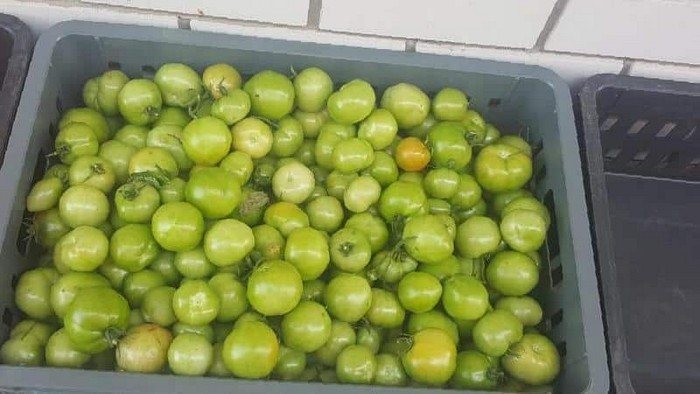
With full compliance with agricultural technology, tomatoes will definitely be sweet, tasty, without white streaks. Plants need to be watered and fed in a timely manner, protected from sudden temperature changes, extreme heat, and insect attacks. Proper crop care will help you get a bountiful and high-quality harvest.


